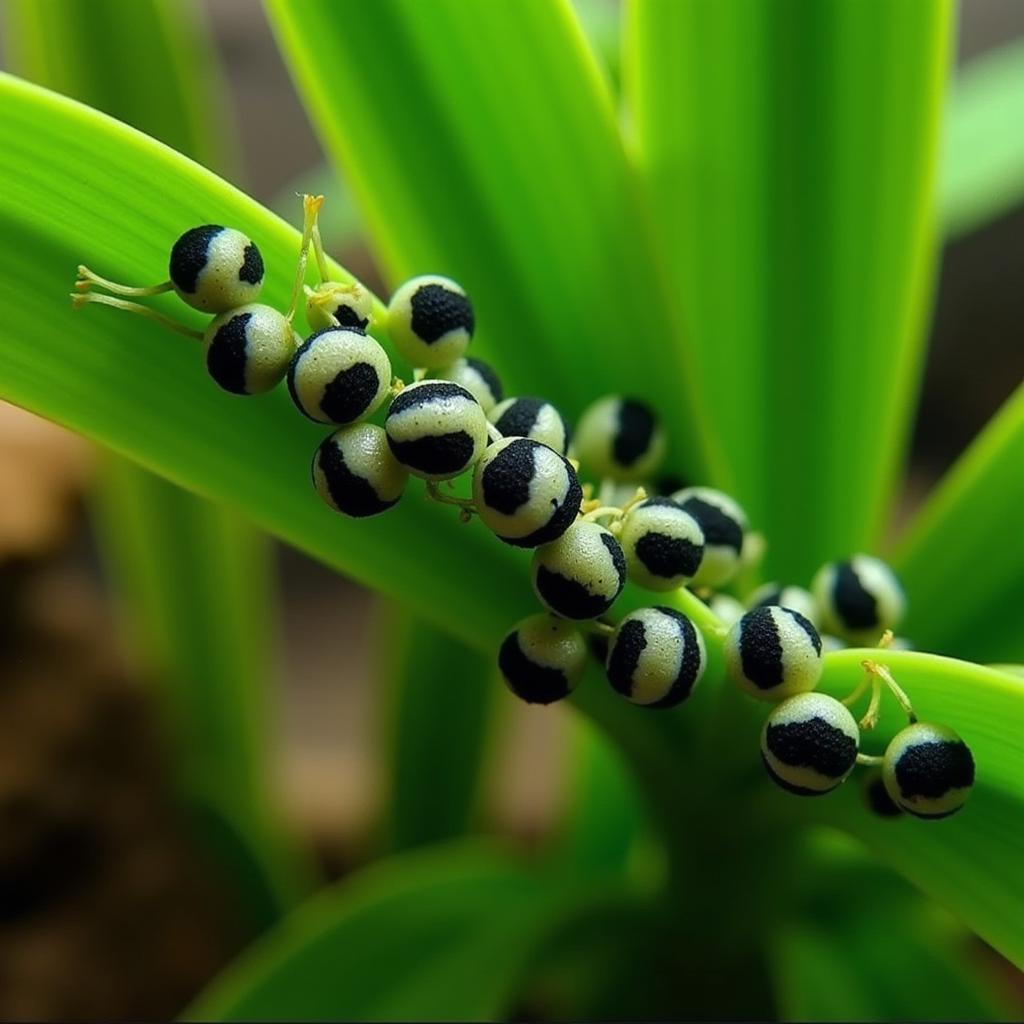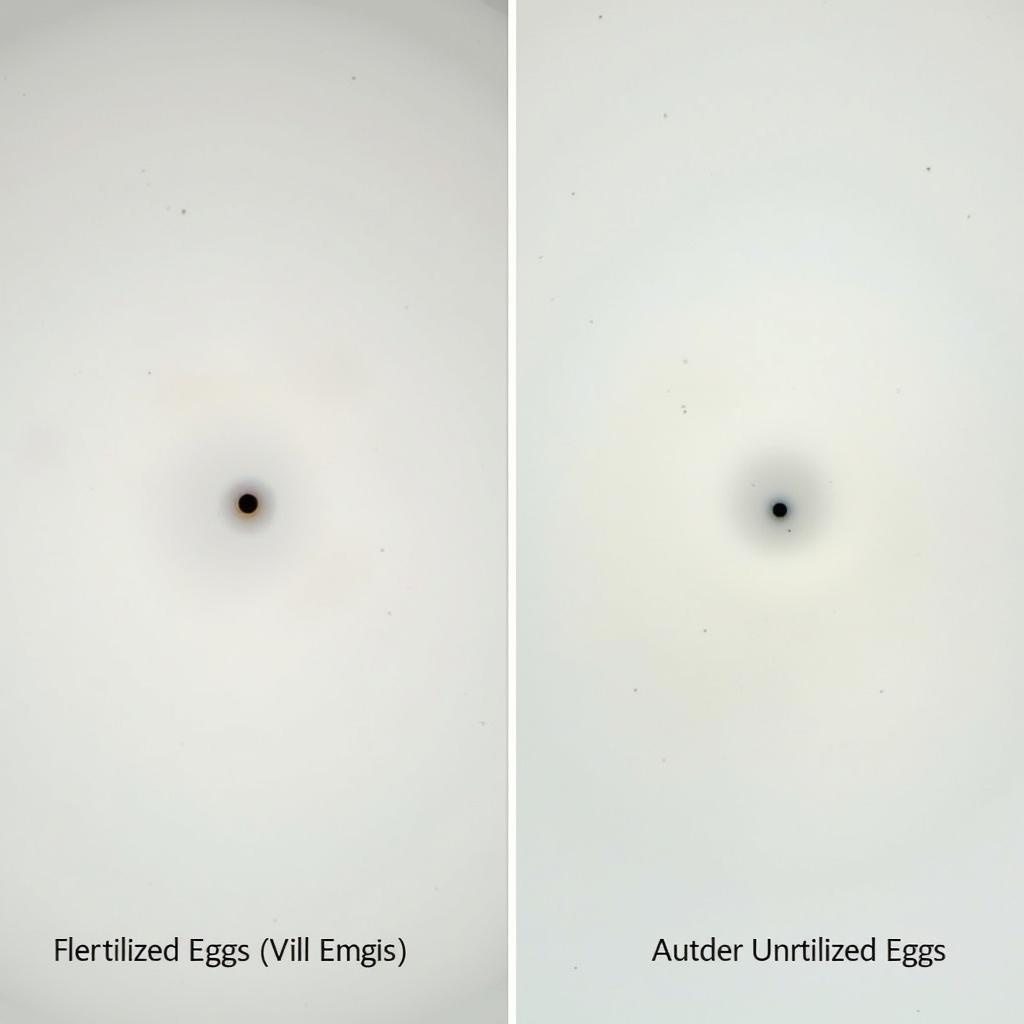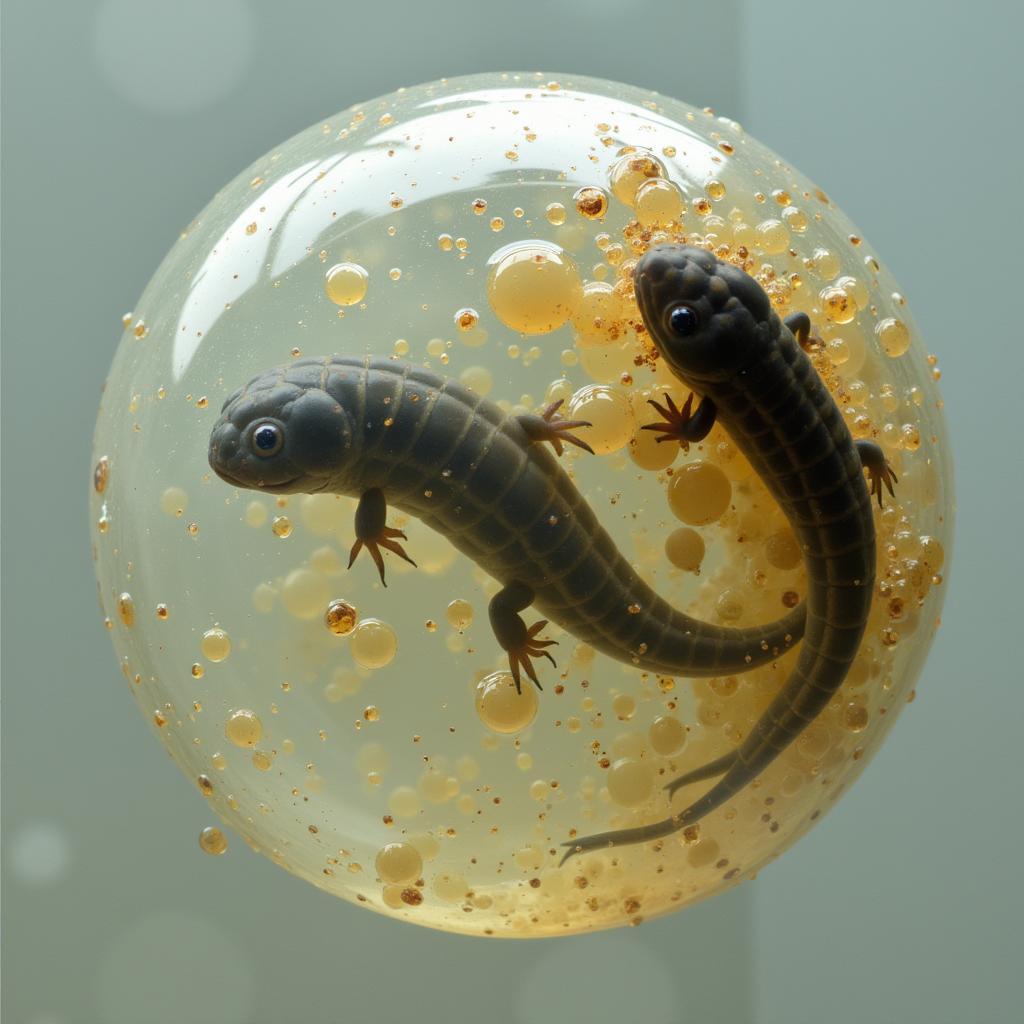African Clawed Frog Eggs: A Guide for Aquarists
African Clawed Frog Eggs are a fascinating sight for any aquarist. These tiny, gelatinous spheres hold the potential for new life, adding a unique dimension to your freshwater aquarium. Understanding the intricacies of african clawed frog eggs, from identification to hatching, can greatly enhance your experience as a frog owner.
 African clawed frog eggs attached to aquarium plants
African clawed frog eggs attached to aquarium plants
What Do African Clawed Frog Eggs Look Like?
African clawed frog eggs are relatively small, measuring only a few millimeters in diameter. They appear as tiny, black and white spheres. The black dot within the egg is the developing embryo, while the surrounding white or clear jelly provides protection and nourishment. Unlike some frog species that lay eggs in clusters, african clawed frogs scatter their eggs, often attaching them to plants, rocks, or the aquarium glass.
How to Identify Fertilized African Clawed Frog Eggs
A common question among new aquarists is how to tell if african clawed frog eggs are fertilized. Here’s a simple guide:
- Appearance: Fertilized eggs will have a distinct black dot in the center, which is the developing embryo. Unfertilized eggs will appear entirely white or clear.
- Development: Within a day or two, fertilized eggs will start to show signs of cell division. You might notice the black dot dividing or the egg changing shape slightly.
- Movement: As the embryos grow, you might even see slight movement within the eggs, especially when viewed under magnification.
 Comparison of fertilized and unfertilized african clawed frog eggs
Comparison of fertilized and unfertilized african clawed frog eggs
Factors Influencing Egg Laying
Several factors influence the frequency and success of african clawed frog egg laying. These include:
- Water parameters: Maintaining optimal water conditions is crucial. Ensure the water temperature is between 70-80°F (21-27°C), pH levels are around 6.5-7.5, and ammonia and nitrite levels are at zero.
- Diet: A balanced and nutritious diet rich in protein is essential for healthy egg production. Feed your frogs a variety of foods like bloodworms, brine shrimp, and high-quality pellets.
- Tank size: A larger tank provides more space for breeding and egg laying. Aim for a tank size of at least 10 gallons for two adult frogs.
- Lighting: A regular day-night cycle helps simulate natural conditions and can encourage breeding behavior.
Caring for African Clawed Frog Eggs
If you discover african clawed frog eggs in your aquarium, you might be wondering about the next steps. Here’s how to care for them:
- Removal: While some aquarists choose to leave the eggs in the main tank, it’s often recommended to transfer them to a separate rearing tank. This prevents the eggs from being eaten by other fish or even the parent frogs.
- Rearing Tank: The rearing tank should have similar water parameters to the main tank. Ensure gentle filtration to avoid disturbing the eggs.
- Hatching Time: African clawed frog eggs typically hatch within 3-7 days, depending on the water temperature. Warmer temperatures can accelerate the hatching process.
- Feeding the Tadpoles: Once the eggs hatch, the tadpoles will initially feed off their yolk sacs. After a few days, you can start offering them infusoria or commercially available tadpole food.
 Tiny african clawed frog tadpoles emerging from eggs
Tiny african clawed frog tadpoles emerging from eggs
Frequently Asked Questions about African Clawed Frog Eggs
Q: How often do african clawed frogs lay eggs?
A: African clawed frogs can lay eggs quite frequently, sometimes every few weeks, especially under optimal conditions.
Q: Can I keep african clawed frog eggs with other fish?
A: It’s generally not recommended to keep african clawed frog eggs with other fish as they are often seen as food.
Q: Do african clawed frogs eat their own eggs?
A: Yes, african clawed frogs, as well as other fish in the tank, may eat the eggs, which is why it’s often best to separate them.
Q: What do I do if I don’t want to keep the tadpoles?
A: If you don’t want to keep the tadpoles, you can contact a local aquarium, pet store, or amphibian rescue organization for advice or potential rehoming options.
Need More Information?
Learn more about caring for your african clawed frogs:
- African clawed frog eggs care
- African clawed frog male or female
- About african frogs
- African clawed frog pregnancy test
Contact Us
For additional guidance on african clawed frog eggs or other inquiries about African wildlife and culture, reach out to us:
Phone: +255768904061
Email: [email protected]
Address: Mbarali DC Mawindi, Kangaga, Tanzania.
Our dedicated customer support team is available 24/7 to assist you.

